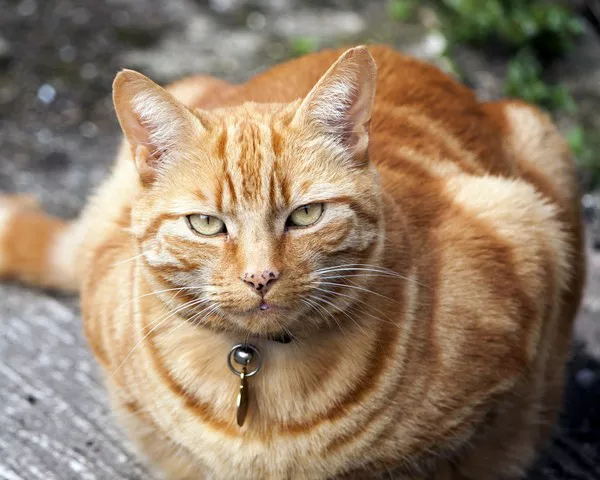Feeding a kitten, especially when it is only a month old, is an essential part of their growth and development. Proper cat feeding during the early stages is crucial for ensuring a healthy, happy life. The process of introducing food to a kitten requires attention to its nutritional needs, as well as an understanding of its developmental stage. In this article, we will explore whether a 1-month-old kitten can eat wet food, how to transition a kitten to solid foods, and best practices to ensure its health.
Understanding a Kitten’s Nutritional Needs at One Month
At one month old, kittens are at a transitional stage between their mother’s milk and solid foods. Typically, kittens are born blind, deaf, and entirely dependent on their mother’s milk for nourishment. As they grow, however, their nutritional requirements begin to shift. At around 3-4 weeks, kittens start showing interest in solid foods, but they are still highly dependent on milk for their caloric needs.
By the time they reach one month old, most kittens have started weaning from their mother’s milk. This process can be gradual, with kittens transitioning from nursing to eating soft foods. At this stage, wet food can play an important role in the kitten’s diet. However, it must be chosen carefully to meet their specific needs.
Can a 1-Month-Old Kitten Eat Wet Food?
Yes, a 1-month-old kitten can begin eating wet food, but there are several important considerations to ensure it is appropriate for their growth and health. At this age, wet food should be specially formulated for kittens, as their nutritional needs are different from adult cats.
Wet food for kittens is a great option because it is softer and easier to chew than dry kibble. Moreover, it contains more moisture, which is essential for kittens that may not yet be drinking enough water. Wet food can also provide the necessary protein, fats, and essential nutrients required for growth. However, there are some factors to keep in mind when introducing wet food into a kitten’s diet.
The Benefits of Wet Food for Kittens
Hydration: Wet food is approximately 75-80% water, which helps to keep a kitten hydrated. At one month old, kittens are still learning how to drink from a bowl, and some may not be fully accustomed to drinking water. Wet food can help to prevent dehydration, which is critical for their well-being.
Ease of Consumption: At one month old, kittens have small, sharp teeth that are not yet fully developed for tearing through harder dry food. Wet food is soft, making it easier for kittens to chew and swallow. This is particularly helpful for kittens who are still learning how to eat solid foods.
Nutrient-Rich: Wet kitten food is typically formulated to provide the right balance of protein, fat, and other nutrients that are essential for a growing kitten. It is important to choose a high-quality kitten formula to support their development during this critical stage.
Helps with Weaning: As kittens transition from nursing to solid foods, wet food offers a smoother transition. They may still be nursing from their mother, but offering them wet food can complement their diet and help them gradually adjust to eating solids.
How to Introduce Wet Food to a 1-Month-Old Kitten
Introducing wet food to a one-month-old kitten should be done gradually, and it is essential to pay close attention to how the kitten responds to the food. The following steps can help ensure a smooth transition:
Step 1: Choose the Right Wet Food
When selecting wet food, ensure that it is specifically formulated for kittens. Kitten food is designed to meet the higher energy and protein needs of growing kittens. Look for brands that list meat or fish as the first ingredient and avoid those with excessive fillers such as corn or soy. Also, choose wet food that is free from artificial additives and preservatives.
Step 2: Mix Wet Food with Formula or Breast Milk
To ease the transition, you can start by mixing a small amount of wet food with kitten formula or mother’s milk. The familiar taste of the milk will make the new food more appealing. Gradually increase the proportion of wet food while reducing the milk formula.
Step 3: Introduce the Food in Small Portions
Kittens at this age have small stomachs and limited attention spans. Start by offering small amounts of wet food several times a day. You can place a small dollop of food on a shallow dish or use a spoon to encourage the kitten to lick or nibble at it.
Step 4: Observe the Kitten’s Response
Watch the kitten closely during mealtime. If it seems hesitant or uninterested in the food, it may need more time to adjust. Never force the kitten to eat, as this could create negative associations with mealtime.
Step 5: Monitor Their Health
Keep an eye on the kitten’s health and behavior as you introduce wet food. Monitor for any signs of digestive upset, such as diarrhea or vomiting, which could indicate an intolerance to the food. If these symptoms occur, consult with a veterinarian to rule out food allergies or other health concerns.
Step 6: Gradually Transition to Solid Food
By 5-6 weeks of age, most kittens are ready to eat solely wet food, though some may still need to nurse for comfort. Continue offering wet food at regular intervals throughout the day, and start to reduce any nursing time. At this stage, you can also begin introducing dry kitten food if desired, although many kittens continue to prefer wet food for some time.
Choosing the Best Wet Food for a 1-Month-Old Kitten
Not all wet food is created equal, and it’s important to choose high-quality food that supports a kitten’s specific nutritional needs. When selecting wet food for a one-month-old kitten, look for the following qualities:
Protein-Rich Formula: Kittens need a high-protein diet to fuel their rapid growth. Look for wet food that contains high-quality animal proteins, such as chicken, turkey, or fish.
Proper Balance of Nutrients: A good kitten food should have a balanced ratio of protein, fat, vitamins, and minerals to support healthy growth and development. Taurine, an essential amino acid, should be included in the food, as it is critical for heart and eye health.
Omega Fatty Acids: Omega-3 and omega-6 fatty acids are important for brain development, coat health, and immune function. Look for foods that contain sources of these essential fatty acids, such as fish oil or flaxseed.
Wet Food Consistency: Wet food comes in various consistencies, from pâté to chunks in gravy. Kittens might prefer a smoother texture in the beginning, but some may enjoy chunks as they become more accustomed to chewing.
Potential Risks and Considerations
While wet food can be beneficial, there are some considerations to keep in mind when feeding a 1-month-old kitten:
Choking Hazard: If the food is not prepared properly or if chunks are too large, the kitten may have difficulty swallowing. Always ensure that the food is appropriately sized for their small mouths.
Dental Health: While wet food is easier to chew, it may not help with the development of a kitten’s teeth. As the kitten grows, it is important to introduce dry food or other chewing options to help keep teeth clean.
Overfeeding or Underfeeding: Kittens have high energy needs and should be fed frequently throughout the day. However, overfeeding can lead to obesity, while underfeeding can result in malnutrition. It is important to follow the feeding guidelines provided on the food packaging and consult your veterinarian for specific recommendations.
Litter Box Hygiene: Wet food tends to create softer stools, which may lead to more frequent litter box cleaning. Be prepared for additional clean-up, especially during the weaning process.
Conclusion
Yes, a 1-month-old kitten can eat wet food, and it is often an excellent choice to help with their transition from nursing. Wet food provides the hydration, nutrients, and ease of consumption that kittens need at this critical stage of their development. However, it is important to select high-quality kitten food and introduce it gradually while monitoring the kitten’s health and progress. Proper cat feeding during the first few months of a kitten’s life is essential to their growth and will help ensure that they mature into healthy, happy adult cats.
Related Topics



























